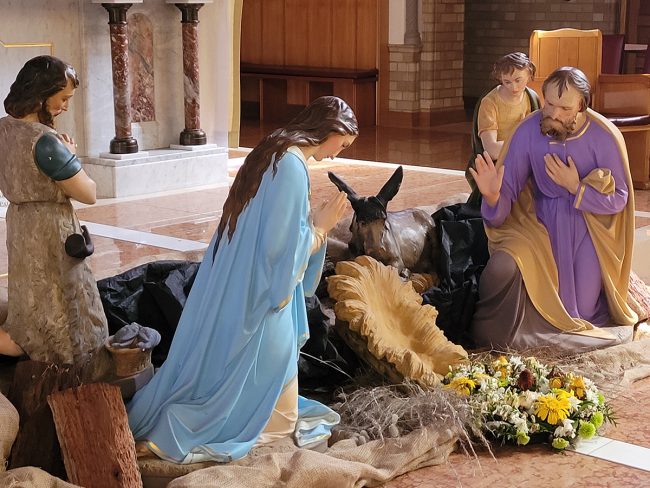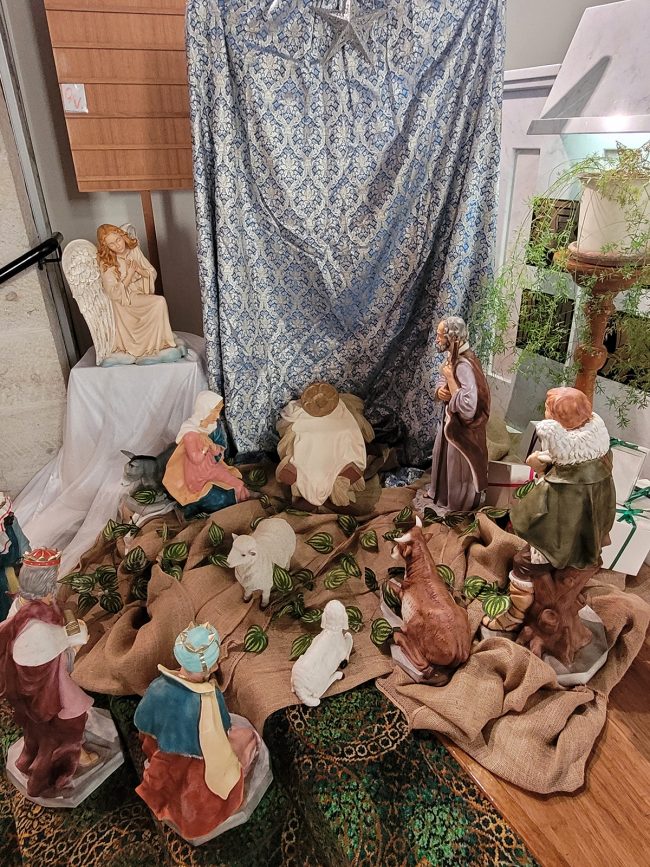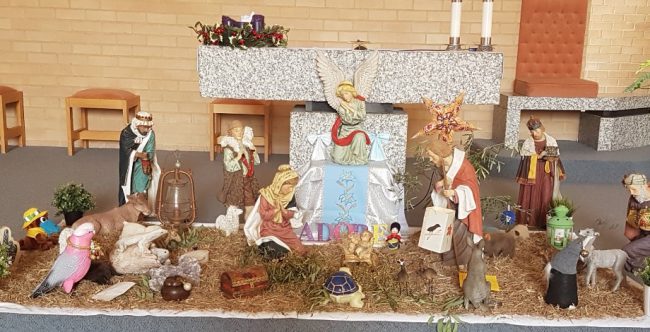“Stilled in silent amazement”

St Christopher’s Cathedral, Canberra
In 1223 St Francis of Assisi had a sudden need for an ox and an ass.
It was Christmas and the patron saint of animals was on his way home from Rome when he stopped at the tiny village of Greccio in central Italy.
Before long an ox and a donkey were found and then hay and a manger. Perhaps then, someone put their hand up to play Mary and another Joseph and others to be the shepherds, the wise men, and angels.
The centrepiece of course was the baby Jesus and no doubt the persuasive words of the great saint summoned up a village bambino for the starring role in what is today recognised as history’s first recorded nativity play.

Our Lady of Fatima Goulburn nativity set
Almost 800 years later in 2019 a pontiff, also named Francis, was at the same spot now known as the Shrine of the Nativity of Greccio.
In the Archdiocese of Canberra and Goulburn nativity scenes remain a familiar, reassuring sight in our churches and schools where we often add distinctive touches of Australiana.
At St Anthony of Padua’s parish in Canberra’s south, for example, the nativity set last year included kangaroos, turtles, a galah, a goanna and two angels made from COVID masks! Parishioners have again been invited to be creative this year around the empty crib.
For in this last week before Christmas, all the cribs are empty as they await the Saviour’s arrival.

St Anthony of Padua, Wanniassa Christmas 2020
That arrival, Archbishop Christopher Prowse said, is the most amazing aspect of Christmas for Christians – God becoming human.
It stems from, he added, Mary and Joseph, the shepherds, the magi and all the rest, “all stilled in silent amazement” at the original nativity scene.
No doubt St Francis of Assisi felt the same way when he stirred the little village of Greccio into action “stilled in silent amazement” to “bring to life the memory of that babe born in Bethlehem.”


